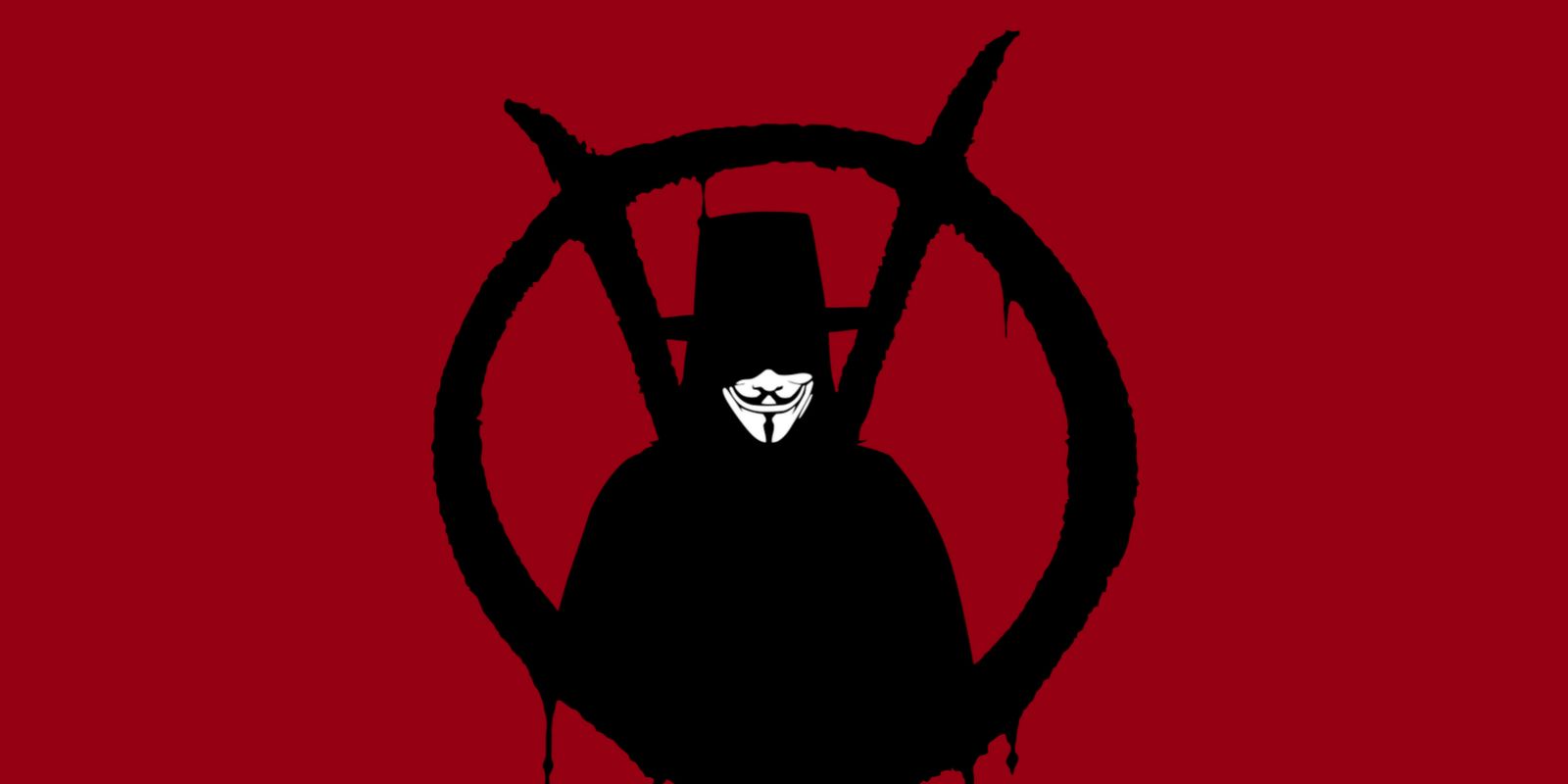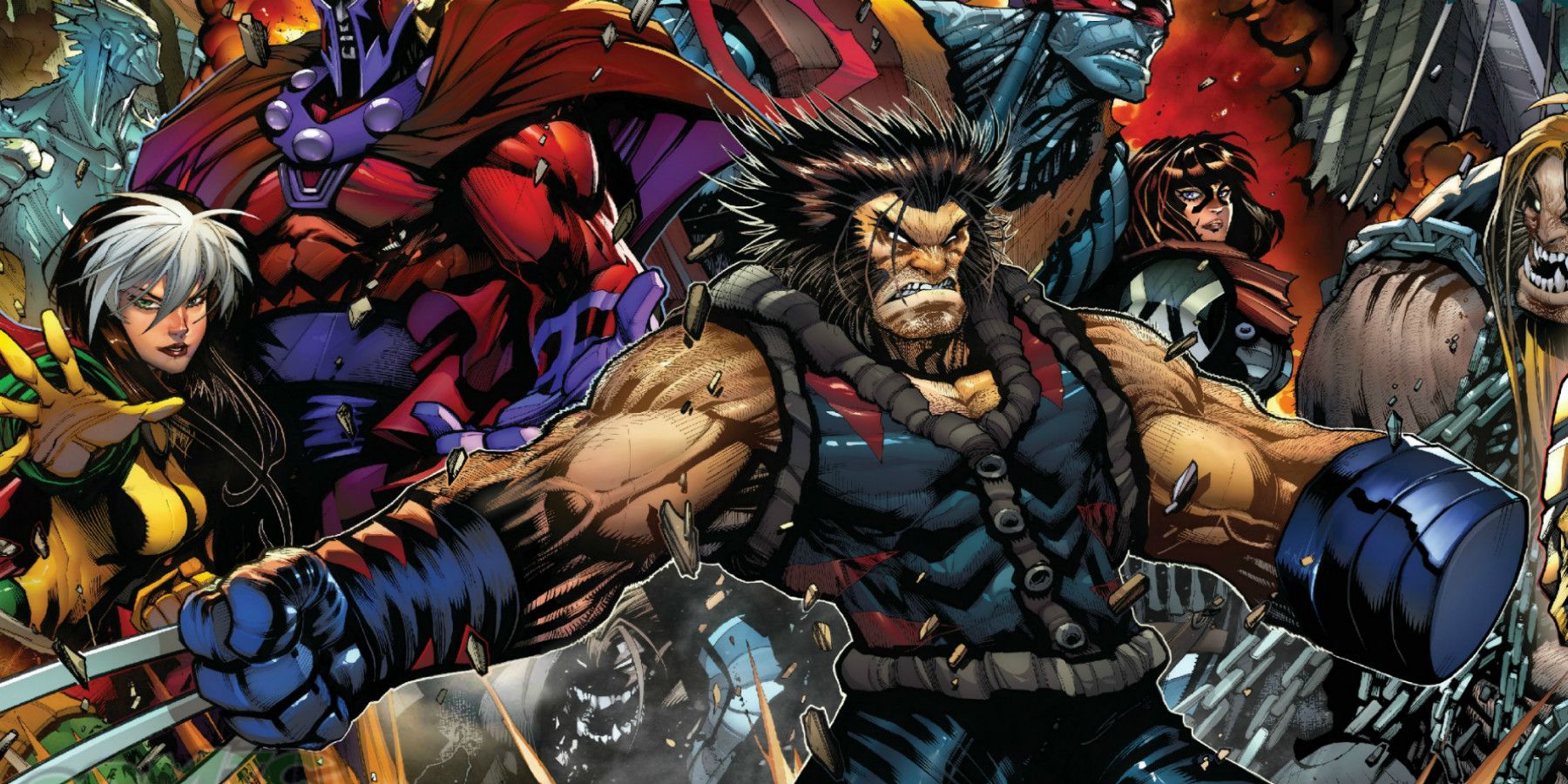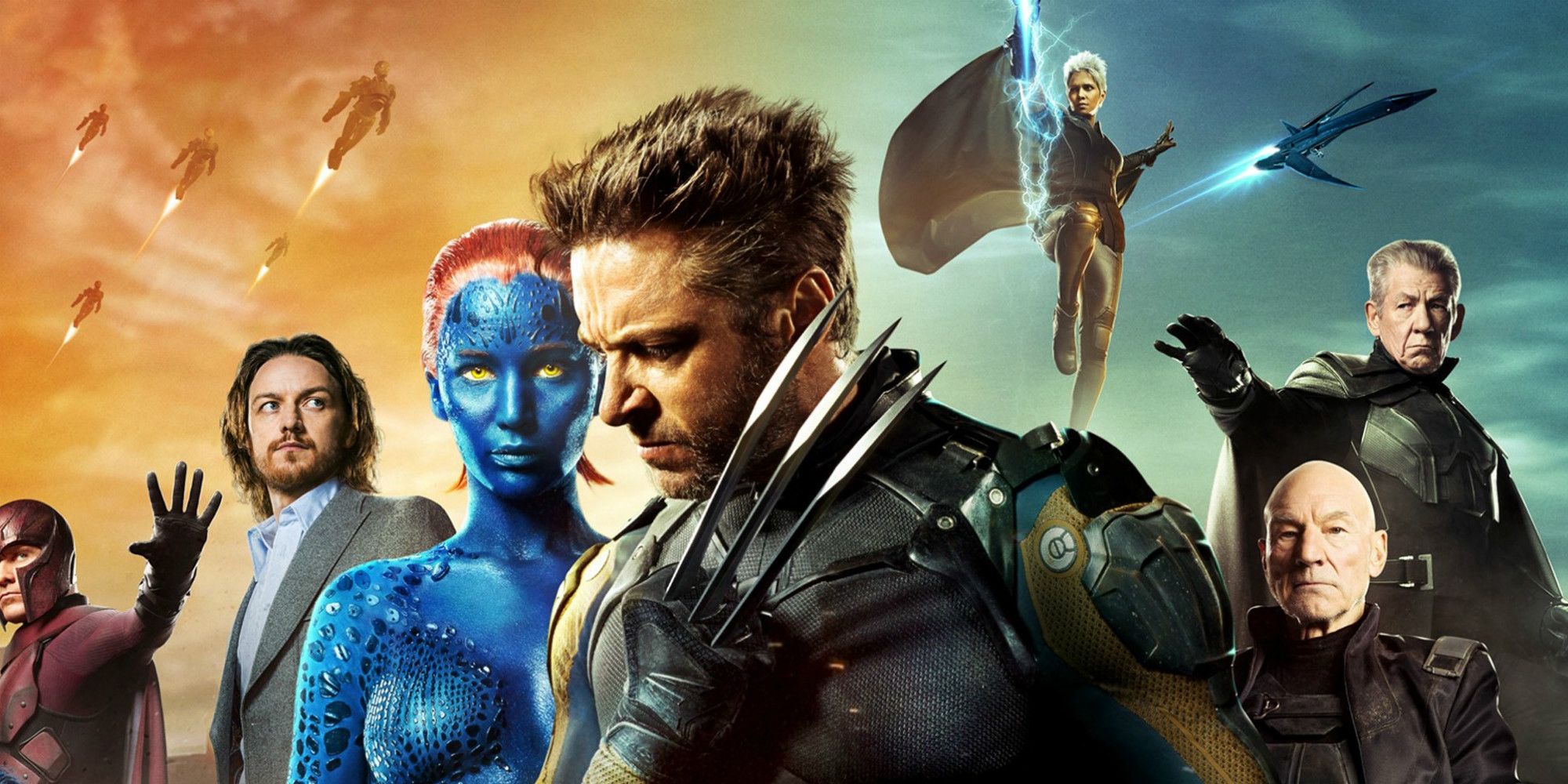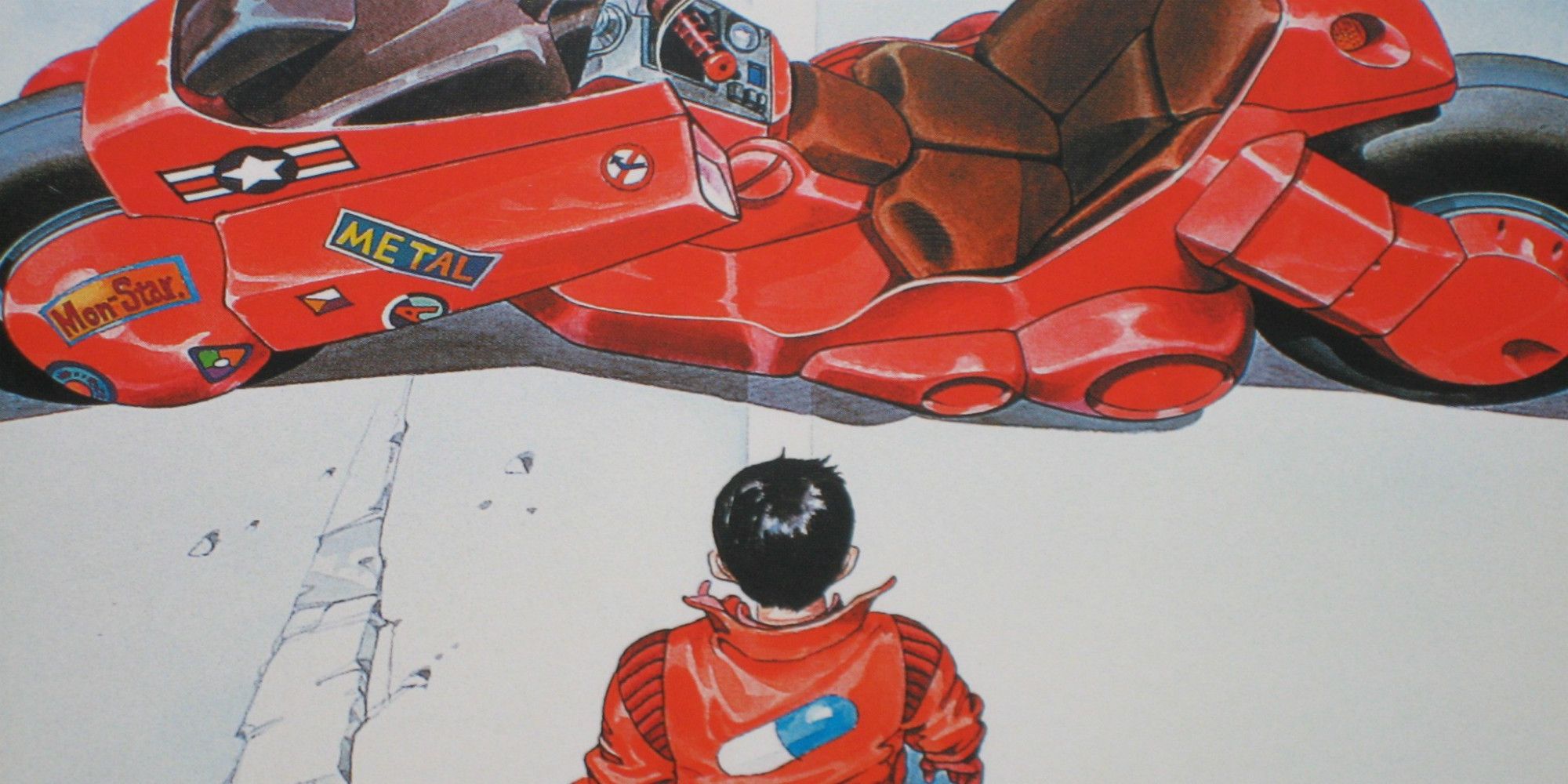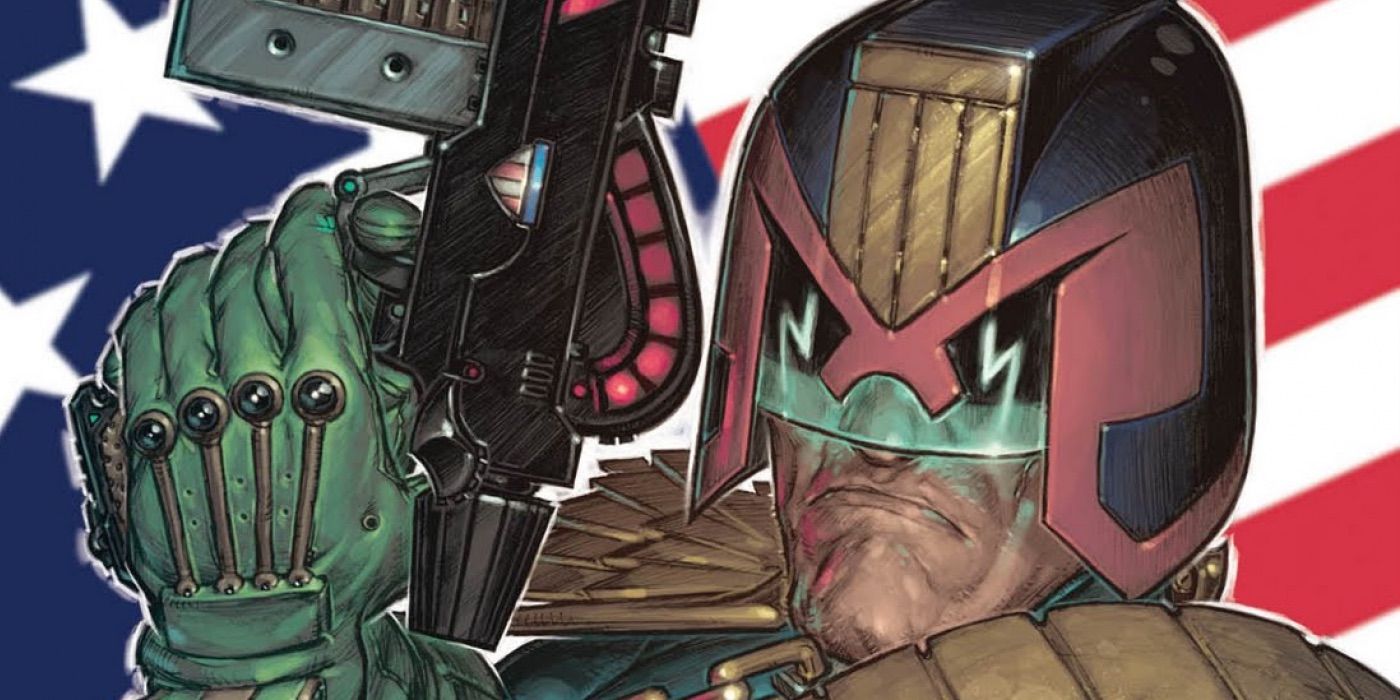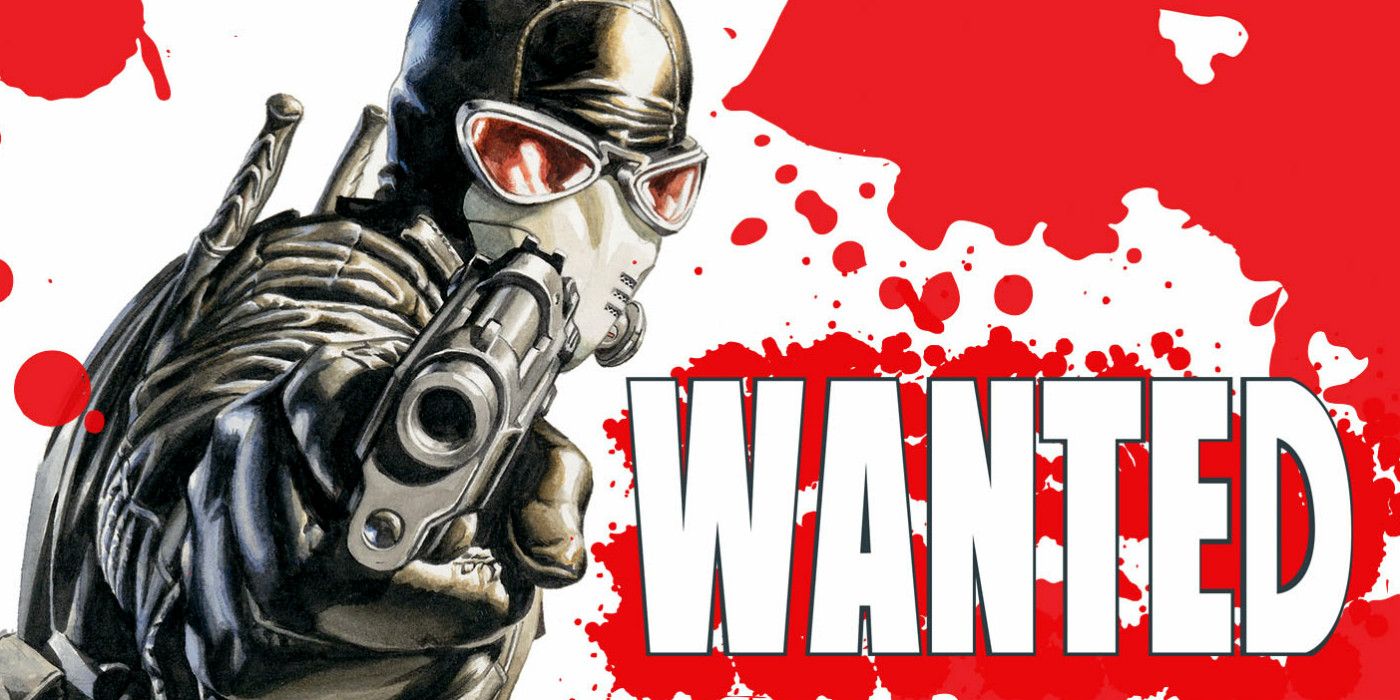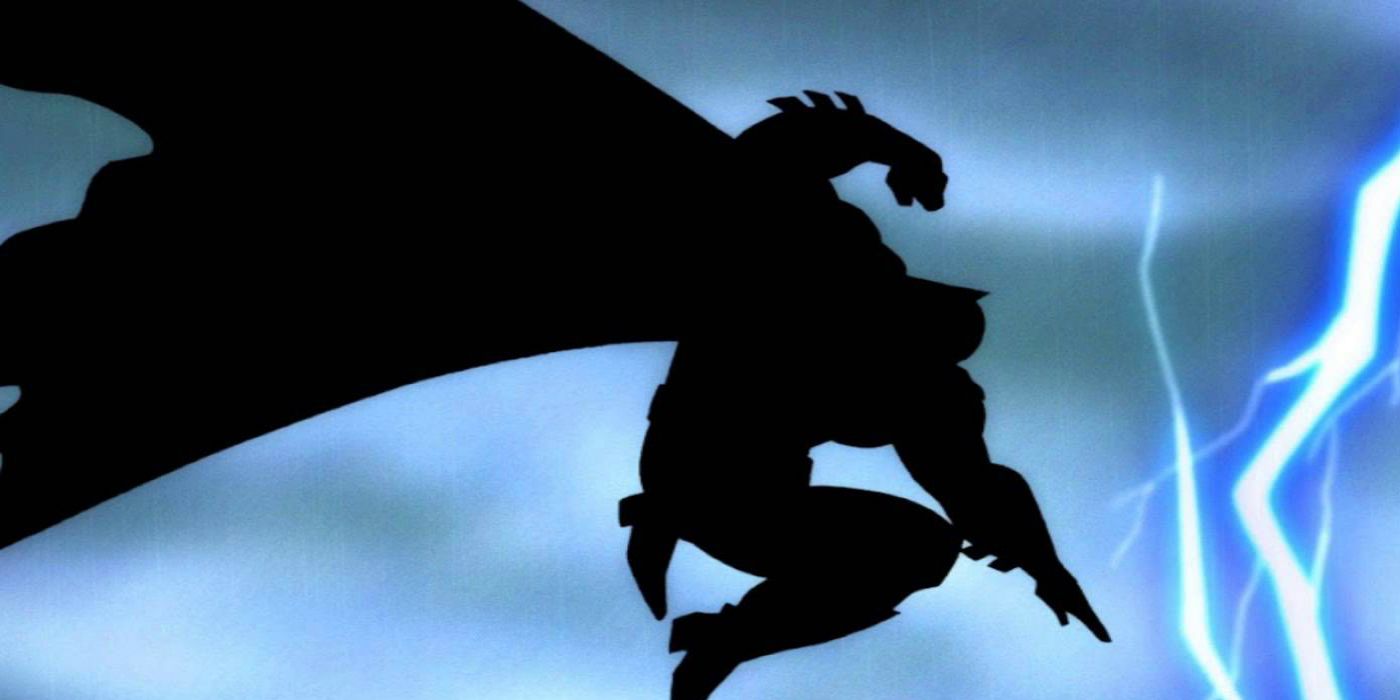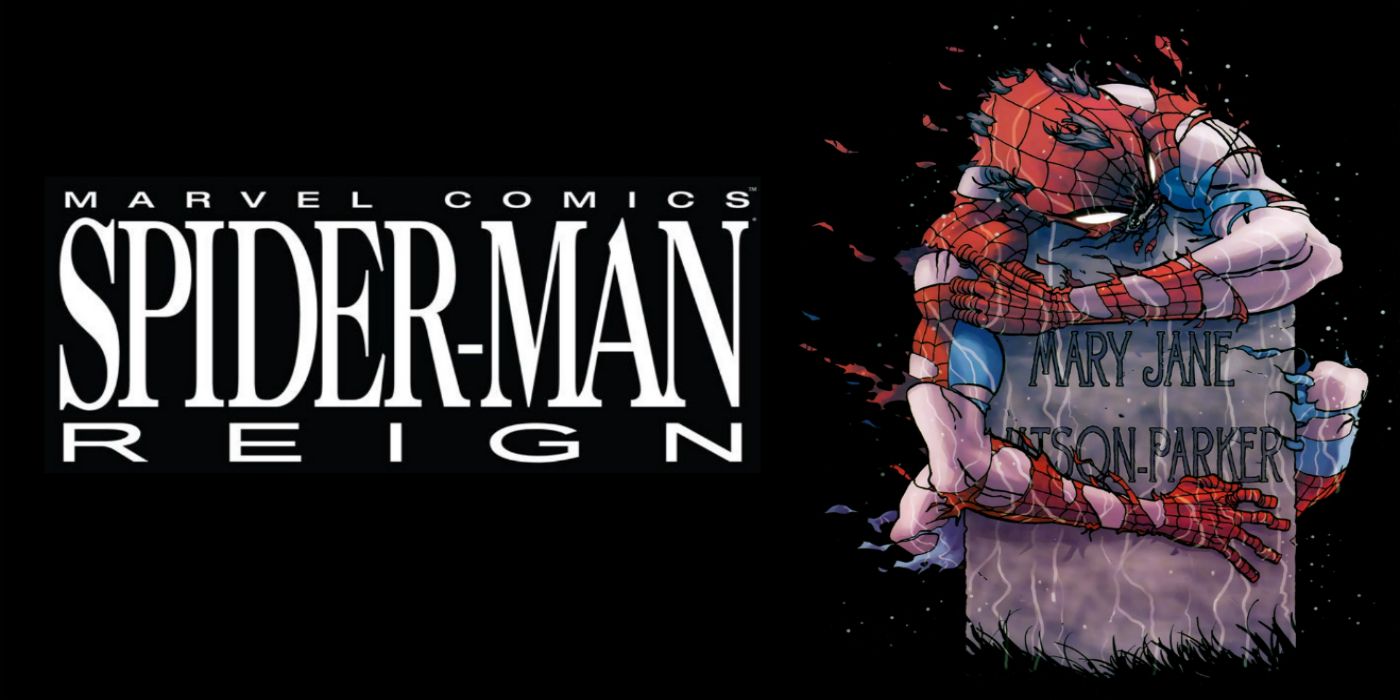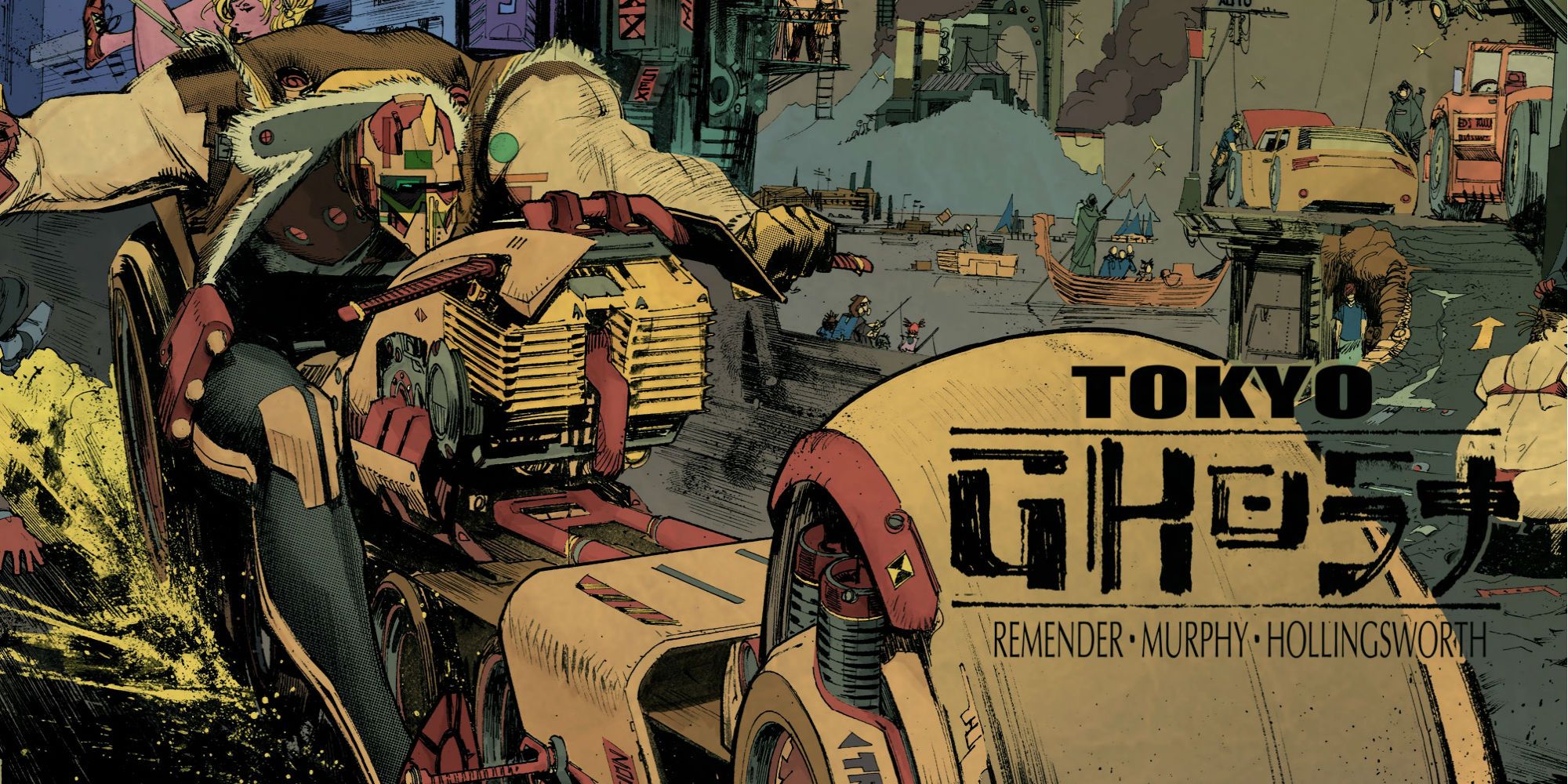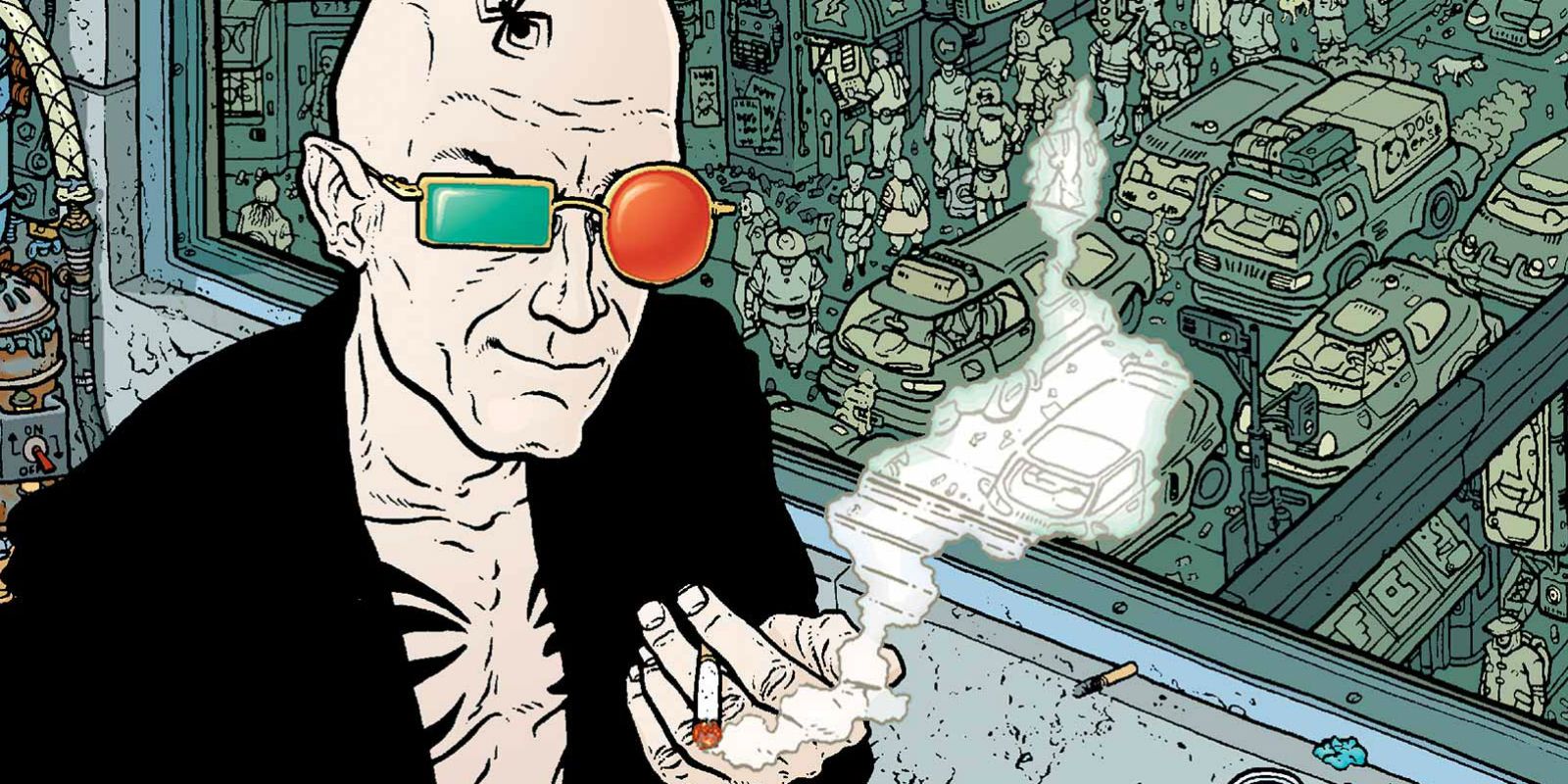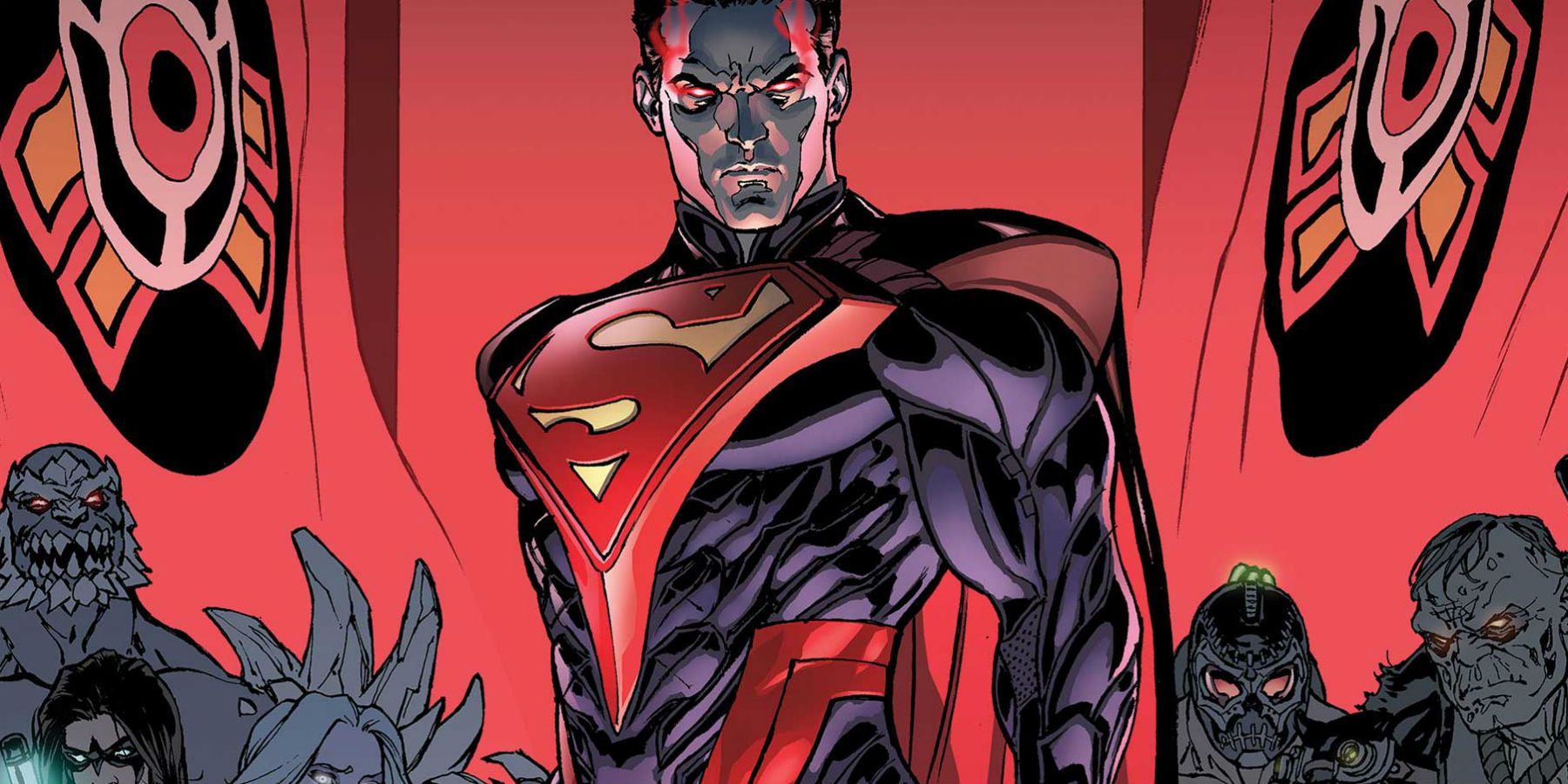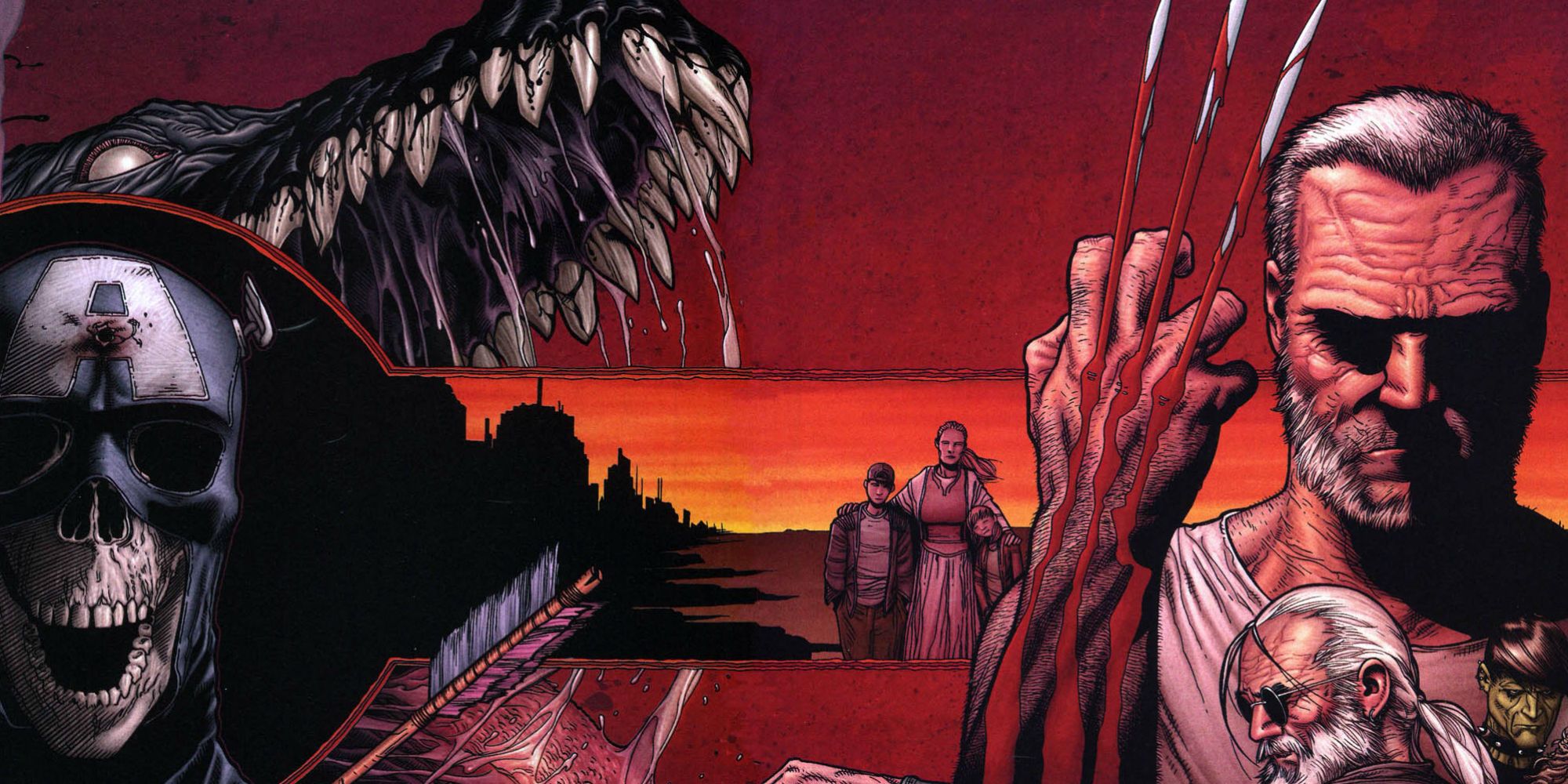There’s something about dystopias that just never gets old. Perhaps it’s the unrelenting oppression or the capacity for tons of atmospheric drama, but ever since they were introduced into fiction, audiences just can’t get enough of them. For the last few decades, comic books have been at the forefront of creating new and inventive dystopias to read about. All of them may have a different thing wrong with them, but rest assured everyone in these stories is suffering the same amount.
RELATED: 15 Darkest Versions Of Superman
The dystopias listed below are filled with post-apocalyptic, toleration and cyberpunk stories that show us just how easily our modern day society can slip into a hole of oppression and fear. There are lessons to be learned in those stories, and we have the best ones listed below.
15 AGE OF APOCALYPSE
The '90s were all about crazy events, changing continuity around and altering characters in unexpected ways. It started with the “Death of Superman,” continued into Spider-Man’s "Clone Saga," and hit the X-Men in the form of “Age of Apocalypse.” It starts, like many comic events do, with completely botched time travel. A mutant named Legion, the son of Professor Charles Xavier, goes back in time to kill Magneto but ends up killing his father instead. With Professor X dead, Apocalypse shows up and pretty much wrecks the world to make a post-apocalyptic (pun intended) future.
Cyclops is missing an eye, Wolverine has lost a hand and all the good guys are following Magneto in a resistance movement against Apocalypse's bloody, iron-fist rule of mutants over humans. The new future replaced all the X-Books during its run and quickly became a fan favorite. The event wrapped up with the group sending Bishop back in time to save Professor X, thus restoring the timeline.
14 DAYS OF FUTURE PAST
Both the comic arc and the film adaptation of "Days of Future Past" follow a pretty similar storyline. In the future (the year 2013 in the comics), hunter-killer machines called Sentinels rule over the United States. Mutants are being hunted down and placed in camps, which are threatening to spread to other countries. In the comic, created by the legendary team of Chris Claremont and John Byrne, Kitty Pryde’s consciousness is sent back in time to prevent the assassination of anti-mutant Senator Robert Kelly, an event that precipitated the future she’s from.
The film makes some alterations to the storyline. Instead of Kitty trying to save Senator Kelly, Wolverine is sent back in time to stop the assassination of the sentinel’s creator Dr. Bolivar Trask. Overall, both visions of the future are pretty similar, right down to the crazy '90s neon. It represents the worst case scenario for the mutants and raises the stakes for the comic series as a whole, as it shows the audience what can happen if the X-Men were to fail in their quest to promote equal rights.
13 AKIRA
When it comes to dystopias, it’s hard to beat cyberpunk. There’s something about the neon lights, grungy street levels and shiny offices of corporate overlords that just sucks a reader (or viewer) in and doesn’t let go. The writers of manga typically get what makes the genre work, which is why “Akira” is so celebrated. It features all the hallmarks of cyberpunk with Japanese sensibilities thrown in.
Biker gangs, psychic experiments gone amok, triply hallucinations and city-wide destruction are woven into the story so well that it’s become perhaps the most classic piece of anime out there. By centering the story on Tetsuo and Kaneda’s biker gang, it gives us a street level view of a military experiment that has far-reaching consequences. We can see everyone’s desperation and how a crumbling world impacts their decisions. By the time the finale hits, we know the characters well and feel their pain.
12 JUDGE DREDD
Dystopias are not kind or friendly places. Sometimes you need law to counteract the chaos, even if that law is so rigid, it kills anyone who gets in its way. In the future sprawl of Mega-City One, Judge Dredd is the embodiment of the law. He and other judges patrol the streets and are empowered to arrest, convict, sentence and execute criminals as they see fit. With Mega-City One as densely populated as it is, there’s no time to waste on due-process or a trial filled with peers. Justice needs to move swiftly.
There have been two on-screen adaptations of the world. The first, Sylvester Stallone’s 1995 misfire, is best forgotten, and left a black mark on the franchise for many years. The 2012 film, however, is actually seen as a faithful adaptation of the source material and connected with fans across the globe. Hopefully we’ll see more of Mega-City One on-screen soon.
11 V FOR VENDETTA
One of the most celebrated works of Alan Moore's career, “V for Vendetta,” which he created with artists David Lloyd and Tony Weare, portrays a dystopian version of the United Kingdom that survived a nuclear war 10 years prior. Now, it bears more resemblance to Nazi Germany than the England of old, with the fascist Norsefire party having established a police state and placing all dissidents in concentration camps.
On the other end of the spectrum is V, an anarchist wearing a Guy Fawkes mask who is bent on sparking a revolution. The brilliance of the graphic novel (that some would argue is lost in the film adaptation) is that it shows the extremes of fascism and anarchy, but doesn’t explicitly say which one is better. One might be drawn to the plucky rebel against a big totalitarian system, but the story doesn’t shy away from the sacrifice, collateral damage and extremism that comes with the militant overthrow of a government.
10 WANTED
Mark Miller has more than one dystopia on this list, but his collaboration with J.G. Jones in "Wanted," is perhaps his most original. In a world clandestinely ruled by supervillains, Wesley Gibson is a lowly cubicle worker who was abandoned by his father at an early age and is being constantly abused by everyone in his life. One day, of course, Wesley is visited by an assassin who tells him he’s the heir to one of those supervillains.
Soon, Wesley joins a brotherhood of supervillains and assassins called The Fraternity, an organization that once fought a massive war with superheroes and eventually won. Using magic and advanced technology, the Fraternity erased everyone’s memories of superheroes and decided to control the world behind the scenes. Wesley receives training to use super powers and is taught to enjoy violence in order to make him a more effective killer. Of course, there’s far more to the world than Wesley simply becoming an assassin. There are betrayals, double crosses, and hidden reveals… but what’s a dystopia without a few lies to cover up the truth? The scariest thing about "Wanted," though, is perhaps that the supervillains' idea of ultimate control -- their dystopia -- is our mundane reality.
9 WATCHMEN
Alan Moore and Dave Gibbons' “Watchmen” was brilliant not just because it held a mirror up to superhero stories, it also held one to our expectation of superhero stories and showed us just how messed up those people would be if they lived in the real world. The dystopia in “Watchmen” is caused by superheroes who thought they could save the world, but ended up leaving it hollow and broken. On top of that, Ozymandias (the smartest man on the planet) decides the only way to fix the world is to break it. So, on top of the original dystopia, another dystopia is created to fix the problems. It's dystopian-ception!
Nowhere is the problem of the world more evident that the flaws ingrained in the characters that inhabit it. Night Owl is addicted to being a superhero, Rorschach has a pathological need to punish criminals, Silk Spectre II is desperately caught in her mother’s legacy and Dr. Manhattan is so detached from humanity it’s hard to call him a hero at all.
8 THE DARK KNIGHT RETURNS
Frank Miller's “The Dark Knight Returns” may be all about a dystopia, but it’s the kind of dystopia that was right at home in the Reagan-era 1980s. In the future, Batman has retired and Gotham City has become a haven for all sorts of violent gangs. Before you can say “caped crusader,” Bruce Wayne dons the cowl, takes up a new Robin and starts a campaign to clean up his beloved city. This dystopia seems tailor-made for Batman, who seems destined to clean up the city, all while being a total badass.
Of course, no alternate universe dystopian Batman story would be complete without a take on the Joker, who still represents the same anarchy threatening to destroy society. On the other side is Superman, a tool of the authoritarian government, who wants Batman out of the picture. As always, it’s up to Bruce Wayne to find the perfect balance of law and order, which he does... sort of.
7 SPIDER-MAN: REIGN
The Spider-Man version of “The Dark Knight Returns,” “Spider-Man: Reign,” by Kaare Andrews and Jose Villarrubia, is set 30 years in the future. Peter Parker has retired from crime fighting and Mary Jane has long since died from constant exposure to his radioactive... blood. The mayor of New York, meanwhile, has taken control of the city, turning it into a police state. After J. Jonah Jameson gets Spidey back into action, the Mayor releases the Sinister Six into the city to find and kill him.
The real twist of this dystopia is that the villain behind everything is Venom. Not only is he controlling the city, but he’s going to turn the entire population of New York into his own personal army of symbiotes. Of course, Peter manages to win the day. He goes to the grave of Mary Jane and tells her he wants to join her, but he can’t yet. Like always, Spider-Man has some responsibilities to fulfill.
6 TOKYO GHOST
It’s the year 2089 in Rick Remender and Sean Murphy's "Tokyo Ghost," and the entire human race is addicted to advanced technology and entertainment. While that might seem just like today’s world, the entertainment scene is pretty much all that keeps people going. After all, the world has deteriorated so much that Los Angeles has become a series of islands. The problem is that gangsters run the entire energy and entertainment industry and thus people’s lives. Led Dent and Debbie Decay are enforces for the gangs, but are given a job that will take them to the Garden Nation of Tokyo: the last place on the planet that has rejected technology and has access to vegetation and clean water.
The series has only lasted 10 issues thus far, but it delves into a world that is completely addicted to technology and explores what that co-dependence means for us as a culture and species. It holds a mirror up to today’s society, which is often more enthralled with the latest movie being released than it is with the state of the world.
5 ECLIPSE
There have been plenty of dystopian worlds in comics. We’ve had zombies, mass deaths, super-villain regimes and ecological disasters. In the world of "Eclipse," by Zack Kaplan
and Giovanni Timpano, a solar event has turned the once nurturing sun into a fiery ball that spews immolating rays powerful enough to flash fry anyone unfortunate enough to traverse the surface of the Earth. The surviving human beings live in nocturnal societies, barely making it day by day.
But, of course, there’s more drama here than meets the eye. A serial killer emerges who burns his victims in sunlight while he manages to survive without so much as a tan. When the killer targets the daughter of a solar industrialist, a solar engineer named David “Bax” Baxter is tasked with protecting her. According to Top Cow Story Editor Bryan Hill, the comic is “not just a story about fearing the harsh light of the sun. It’s also a story about fearing the darkness inside the human heart.”
4 TRANSMETROPOLITAN
Another twisted world from the minds of Warren Ellis and Darick Robertson, the transhumanist dystopia of “Transmetropolitan” is a haven for cyberpunk fans through and through. A renegade gonzo journalist named Spider Jerusalem decides to stick it to the man, fighting corruption in the government with every tool at his disposal, which includes a keen mind, journalistic integrity and a bowel disruptor. The setting for these adventures is The City, an urban sprawl rife with hedonistic capitalism, substance abuse, perverted sex and senseless violence.
During his campaign to save The City from becoming a worse dystopia than it already is, Jerusalem returns to his old newspaper and works to expose police violence and corruption. Jerusalem’s relationship with his friends is just as strained as those he has with the city, however. The main story centers around Jerusalem working to take down president Gary Callahan, an insane sadist bent on using his power to hurt others. What follows is a personal battle between the two with The City caught in the middle.
3 INJUSTICE
Superman becoming a fascist dictator is hardly a new idea, but “Injustice” does it really, really well. In a world where the Joker not only nukes Metropolis, but tricks Superman into killing Lois Lane and his unborn baby, Superman loses his mind and kills the Joker. After that, he sets up an authoritarian regime and rules the world with an iron fist. Batman sets up a rebellion against him, but many lives are lost in their power struggle… including Dick Grayson.
RELATED: The 15 Most Chilling Deaths In Injustice: Gods Among Us
Of course, in the end, the only thing that can really beat Superman is another Superman, so it’s a stroke of good luck that this dystopia becomes entwined with an alternate universe where Superman never went crazy. The combined efforts of Batman’s insurgents and the heroes we know and love is enough to bring Superman down. Unfortunately, we have no idea what’s in store for the second Injustice game… so we’ll just have to wait and see.
2 OLD MAN LOGAN
The inspiration for Hugh Jackman’s final outing as the character on the big screen in "Logan," the dystopia in “Old Man Logan” (by Mark Millar and Steve McNiven) is about as screwed up as it gets. While the film features a road trip between a battle-weary Logan, a senile Professor Xavier and Logan’s female clone, the original comics run was all about Logan and a blind Hawkeye traveling across a country that had been completely conquered by supervillains. Those villains include the Abomination, Magneto, Doctor Doom and the Red Skull.
The really scary villains include a venom-bonded dinosaur (seriously, it’s crazy) and the Hulk Gang. One Hulk is bad enough, but this is a group made up of the incestuous grandchildren of Hulk and She-Hulk. That’s a level of awful few have dared to tread in mainstream comics. Eventually, Hulk and Logan face off for one final showdown. Logan manages to win in a way only he could (you’ll have to read the comic), and gets a renewed sense of purpose when he decides to defeat the rest of the villains holding the United States hostage.
1 Y: THE LAST MAN
Widely considered one of the greatest comics of all time, “Y: The Last Man” tells the story of a world where every male dies at the same time. That is, every man except for Yorick Brown and his pet monkey, Ampersand. While many people's first reaction to reading that might be that it could be fun for poor Yorick, not to mention the women who are left without men, that’s anything but true. The resulting world is a harsh place where people are doing the best they can to survive. If Yorick is discovered on the street, he’s more likely to be exploited or sold than revered.
This level of complexity is what makes writer Brian K. Vaughan’s world so incredibly interesting. The various reactions to all the men being dead ranges from complete despair to militant elation. It’s how Yorick and his companions navigate these different groups that makes for such a compelling narrative, right up until the final issue.
What are your favorite dystopias in comics? Let us know in the comments!

